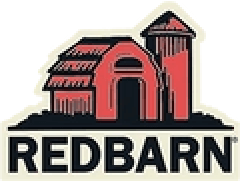
5 Benefits of Legumes in Dog Food
According to the Merriam-Webster dictionary, legumes are defined as “the fruit or seed of plants of the legume family (such as peas or beans) used for food.” They are members of the Fabaceae plant family, commonly known as a pea or bean, and are a class of vegetables known for their versatility and sustainability.
So what are these vegetables doing in your dog’s food?
Legumes are highly nutritious and packed with protein, carbohydrates, fiber, and other key vitamins and minerals your dog needs. They offer a great source of added nutrients to their diet, especially when balanced with other beneficial ingredients.
Common Legumes Found in Dog Food:
- Peas
- Chickpeas
- Kidney beans
- Soybeans
- Fava beans
- Lentils
Legumes in Dog Food
Legumes are found in dog food ingredients, which include lentils, peas, and beans. They are often used in grain-free recipes, replacing ingredients like wheat and other grains.
But there’s a misconception suggesting legumes are just filler.
As just mentioned, legumes serve as a natural source of protein, fiber, and carbohydrates for dogs. They play a supporting role in some of the key building blocks of a dog’s diet.
In an interview with Pet Food Industry, Kansas State University pet food program coordinator Dr. Greg Aldrich stated legumes aren’t bad and in fact, they serve as a nutritious pet food ingredient.
“It’s common knowledge in nutritional parlance that the legume seeds should be complimented in the diet with other ingredients to balance out the amino acid profile,” stated Aldrich.
The issue he’s found with legumes in dog food is a lack of balance, which occurs when one ingredient dominates over others. For example, if legumes made up a higher percentage of animal protein in a dog’s food. Or, if a dog only ate chicken, missing out on essential nutrients typically found in an omnivore’s diet.
“They’re all tools in our toolbox to give us balanced nutrition. An ingredient is a nutrient delivery device.”
It’s important to check the ingredients in your dog’s food, especially noting the first five ingredients.
Pro Tip: Look for high-quality animal protein in your dog’s first five, then look for vegetables, vitamins, and minerals.
Protein
Your pooch is an omnivore but they have cravings like a carnivore, which means they want meat! Now they may not be in the wild hunting for fresh prey, but they definitely thrive when fed high-quality protein.
But did you know protein exists in several other non-meat sources?
Legumes are an excellent source of protein.
One cup of pinto beans contains 15 grams of protein, compared to 44 grams of protein found in a 5-ounce steak. That’s a lot of plant-based protein!
Protein Amounts in Popular Legumes
- Lentils: 17.86 grams of protein per cup
- Chickpeas: 14.53 grams of protein per cup
- Fava Beans: 12.92 grams of protein per cup
- Green Peas: 8.58 grams of protein per cup
- Pinto Beans: 15.41 grams of protein per cup
Caution: legumes should not be your dog’s only source of protein, since they don’t have all 9 amino acids needed to qualify as a complete protein, but they are a great secondary source of protein in your dog’s diet.
Carbohydrates
You want your dog to run, jump, and play as long as they can! So dogs need the right source of energy to keep their bodies in tip-top shape. While we know your pup benefits from high-quality protein, carbohydrates are also a great form of energy.
Legumes are complex carbohydrates. This means they take more time to digest, releasing energy over a longer period of time (unlike simple carbs offering quick boosts of energy).
Fun Fact: Legumes are naturally low fat and are low-glycemic, allowing your dog to stay fuller longer due to slowed digestion!
Dietary Fiber
Fiber comes in two forms, soluble and insoluble, both serving their own unique role in maintaining a healthy gut. Soluble fiber dissolves quickly and can help lower glucose levels. Insoluble fiber promotes regular bowel movements, preventing constipation and allowing food to flow through the digestive tract.
Legumes contain both soluble and insoluble fiber at various amounts.
- Black beans (½ cup cooked) have 3.8 grams soluble fiber, 3.1 g insoluble
- Garbanzo beans (½ cup cooked) have 1.2 grams soluble fiber, 2.8 g insoluble
- Lentils (½ cup cooked) have 2.9 grams soluble fiber, 3.8 g insoluble
- Green peas (½ cup cooked) have 3.2 grams soluble fiber, 1.2 g insoluble
Something to also note: beans are packed with fermentable fibers that move through the large intestine to help feed the healthy bacteria in your dog’s stomach.
Sustainability
Out of all the cool benefits we’ve listed about legumes, one of the best features is its impact on our environment.
According to scientific research, legume crops have a positive influence on our climate because they increase the fertility of the soil. This helps reduce the need for synthetic fertilizers.
Legumes are often planted as a natural fertilizer since they increase nitrogen and organic matter into the soil as they grow. Even better, some legumes double as wholesome livestock feed.
Other Benefits of Legumes
The nutritional benefits of legumes extend beyond the ones listed –– it seems like legumes can do everything!
Other Nutritional Benefits Include:
- High in B-group vitamins
- High in iron
- A source of calcium
- A source of phosphorous
- A source of zinc
- A source of magnesium
- High in natural antioxidants
Always make sure to read the back of your dog food label to ensure that the food is appropriate for your dog and if you’re unsure what your specific dog needs, consult your veterinarian.


